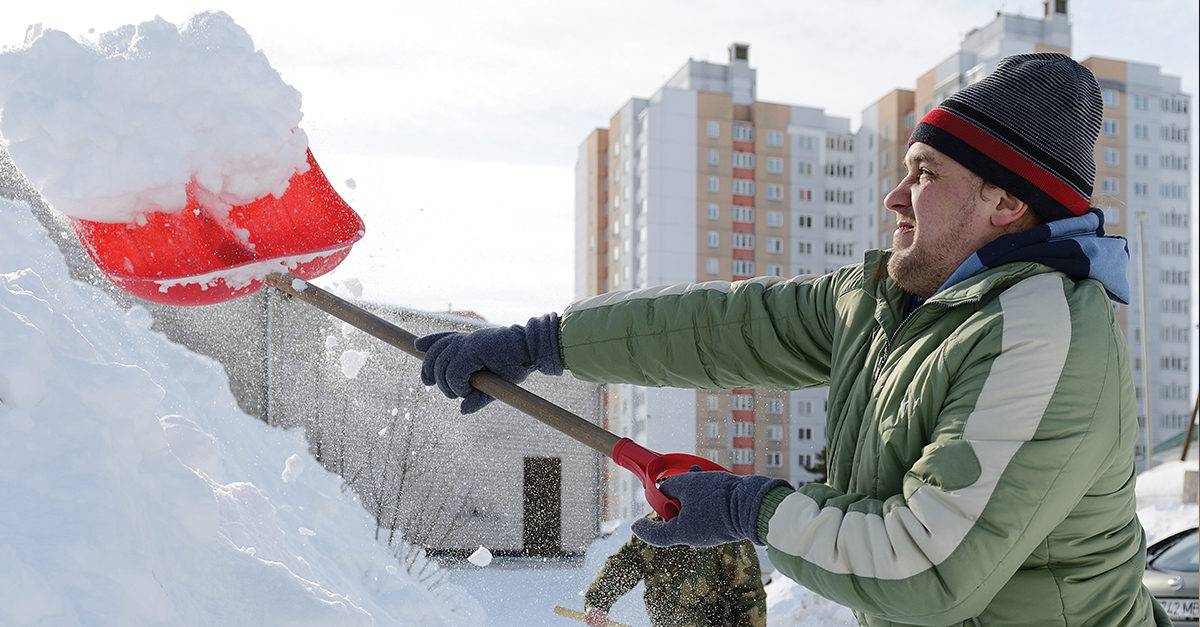Winter weather is one of the biggest threats to business continuity, employee safety, and legal liability that facility managers are forced to manage. While it is easy to forget about the pain of unpredictable snow when summer is just beginning, it is actually a time to plan ahead to avoid the pitfalls of being unprepared.
The climate has become more volatile, which we saw this past winter with record-breaking blizzards in the mid-Atlantic, and the previous winter with weekly storms in the Northeast. To deal with changing conditions, it becomes necessary to have more robust snow plans, a better supply chain, and a more proactive approach.
The Importance of Managing Snow and Ice
Having a closed facility can translate into lost revenue for a business; however, liability for slip-and-falls is a significant concern. According to Zurich Insurance, a global insurer, the average general liability claim due to snow and ice is valued at more than US$15,000, while the average employee claim tends to cost upwards of $35,000. Compare this to the cost of managing all snow and ice operations for a winter, and it quickly becomes clear that facility managers can’t afford to risk having any claims.
The good news is that facility managers can successfully manage snow and ice by being more proactive in planning. The following information should serve as a guide, whether an in-house crew or a subcontracted vendor is performing the snow removal. Additionally, the following considerations are true for every region that manages snow.
Start Early
First and foremost, a good snow program starts with lots of planning. Execute contracts for services, equipment rentals, and supplies before summer ends, and allow plenty of time for site visits to occur in addition to the creation of snow response plans. This means that request for proposals (RFPs) must start even earlier than that to allow for enough lead-time to select vendors.
Whether facility managers handle snow in-house or as a subcontracted service, it will take considerable time to mull over contingency plans for a solid snow and ice management plan. For instance, what is the plan if 30 inches of snow falls in less than 24 hours? Will staff or contractors haul the snow off site? Is the proper equipment available to stack it high enough to allow access?
According to the Snow and Ice Management Association (SIMA), the best practice for procuring snow services is to award contracts from mid-summer to the start of fall—that’s now. Waiting beyond that time adds risk by creating potential for logistical issues, inaccurate pricing, over-commitment, and lack of qualification. When compounded by the requirements that purchasing and legal departments will impose on any contract award, it becomes clear that the timeline is much tighter than it initially appears.
Communicate
No snow removal program can be successful without a solid communication plan. The communication plan should outline how to pass jobsite details to field crews, how to handle call backs or service requests, and what the escalation process will be. Both operations and end-users should identify key stakeholders for various issues that may arise.
Additionally, your snow removal plan should be documented, widely available, and detail every key factor impacting snow operations. It should contain a map that shows where to place snow piles and consider traffic patterns and drainage. The plan should communicate start and end times for shifts as well as any areas requiring special attention, such as loading docks, emergency entrances, or priority areas.
Creating the plan is not just for the benefit of the crews who will be completing the snow operations. By communicating the plan throughout an organization, anyone who accesses a facility throughout the course of a winter will be able to understand the end goal and work to help achieve the result in a safe and efficient manner. For instance, knowing that certain areas of a parking lot are set aside for snow stockpiling will prevent employees from parking in those spaces, making them less likely to slip and fall on snow that melts and refreezes, while allowing snow crews to more efficiently stack snow by avoiding close contact with vehicles. Achieving total buy-in throughout an organization allows for a better end result.
Review Areas of Concern
If you or your organization have never created a snow and ice management plan, it can be difficult to know where to start. There are many factors to consider, but they tend to fall into the large categories of operations, environmental, and cost considerations.
Operational concerns consist of deciding what areas need snow and ice clearing and by what times of day. Determine what will trigger salting or plowing services, and what will trigger services to address snow accumulation. Some facilities will require zero-tolerance programs, while others only need emergency access. Further, there may be concerns about corrosion; certain de-icers may be required as a result.
Environmental concerns vary greatly from site to site and can often impact where workers stockpile snow or what type of de-icer is necessary. Town ordinances may also play a factor. It can be challenging to balance these concerns when they may be in direct conflict with certain operational concerns. Fortunately, there are many new de-icers, which help to find better balance between safety and environmental impact.
Cost considerations will also impact any decision. While every facility would prefer a completely slip-free environment with constant service and dedicated equipment, this simply isn’t a reality for many sites. It is the job of a facility manager to juggle safety, liability, and cost to find the right balance for each facility’s unique situation.
Reach Out to Resources
It can be overwhelming to embark on a snow and ice plan alone. Fortunately, there are two industry organizations to provide guidance. SIMA (www.sima.org) and the Accredited Snow Contractors Association (www.ascaonline.org) are always willing to help facility managers locate snow contractors and suppliers in their market for any need as well as provide education.
In any industry, those who are serious about performing at the highest level can earn certifications to expand their knowledge base and prove their commitment. The snow and ice management industry is no different. There are several opportunities for earning designations, such as Advanced Snow Manager and Certified Snow Professional, to gain an advantage in managing winters’ worst storms. The best companies have actually earned an ISO SN 9001 certification validating their business processes are sound. Further, there are annual educational events and tradeshows, such as the Snow Symposium, as well as online education and resources.
By exploring new opportunities, many facility managers are surprised to learn the amount of support available to them that didn’t even exist just a few years ago. For anyone who thinks they may be able to improve their snow and ice maintenance program, now is the time to reach out and implement something new. After all, who knows what this winter will bring?



